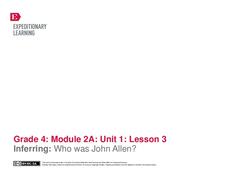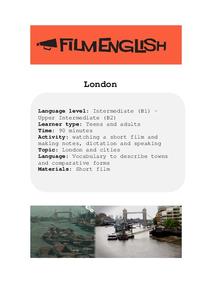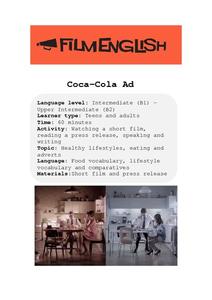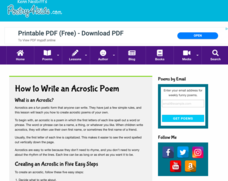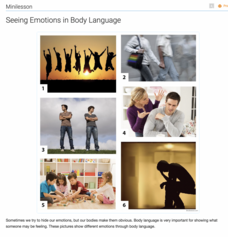EngageNY
Close Reading of The Boy Who Loved Words: How Do People Build Their Word Power?
Third graders practice the skills of identifying the main message in a story, describing the main character, and sorting the key details of a story into specific categories. The story they read is, The Boy Who Loved Words. Using a...
EngageNY
Writing a First Draft: Accessing Books Around the World Informative Paragraph
Supervise the final drafting of a well-organized paragraph by following the steps outlined in this plan. Using the included sample paragraph as a model, class members brainstorm criteria for quality work and then compose their paragraphs...
EngageNY
Inferring: Who was John Allen?
Help your learners work with difficult or archaic words. A continuation of lesson two of this module, the plan here focuses on deciphering the Inventory of John Allen, in particular the unfamiliar words that make up much of the list. Add...
Curated OER
Talking Pumpkin Story Starter
Get your ghouls and gals writing on Halloween! Learners write about what their jack o' lantern said when it suddenly came to life. A cute pumpkin graphic and a fun font spices up the resource.
Berkshire Museum
Adopt a Schoolyard Tree
Help young scientists connect with nature and learn about trees with a fun life science lesson plan. Heading out into the school yard, children choose a tree to adopt, taking measurements, writing descriptions, and drawing sketches of it...
Film English
London
Give your class a tour of London! Before you get started, pupils can brainstorm what they do and do not know about the city and discuss how they think it may have changed over the years. The provided video shows footage from London in...
Film English
Coca-Cola Ad
Have your class members consider how their lifestyle choices may differ from those of their grandparents when they were younger. After brainstorming and discussing differences in lifestyle, pupils watch a Coca-Cola advertisement that...
Smarter Balanced
Food Waste and Food Access
Forty percent of food in the US goes uneaten while 14.5 percent of US households lack a secure supply of food. As part of the preparation for a performance task assessment, groups consider statistics such as these about food waste and...
Rainforest Alliance
Who Takes Care of the Maya Forest Corridor?
Who keeps animals safe? Who keeps us safe? Discover the helpers that make learning and growing possible through a medley of activities that focus on habitats—ours and those in the rainforest. Scholars are asked to identify one...
Houghton Mifflin Harcourt
A World of Animals: Extra Support Lessons (Theme 10)
Provide extra support with this collection of animal-themed lessons. Early readers gain proficiency in high frequency words are and he, practice blending short vowel sounds, and substitute initial and final phonemes while...
Novelinks
Zach’s Lie: Guided Imagery
Close your eyes and picture a time where you decided to tell the truth to someone. What were you wearing? How did you feel? Such prompts begin a guided imagery activity for Zach's Lie. Directions for creating an environment conducive to...
Poetry4kids
How to Write an Acrostic Poem
Acrostic poems are perfect for any topic! A quick tutorial guides learners into writing acrostic poems with the basics and key examples.
Council for the Curriculum, Examinations and Assessment
Managing Influences and Making Decisions
Does patience help people become more responsible? Class members explore the topic with a What's It To Do With Me? quiz to assess their personal responsibilities. They engage in a whole-class discussion about pros and cons of instant...
Curated OER
Sink or Float
Second graders explore floating and sinking and make predictions about whether certain objects are likely to sink or float. They read the story Who Sank the Boat? by Pamela Allen. Pupils loacate rhyming words and discuss the events of...
Curated OER
Twirly Whirly Milk
Student observe the effect soap (or detergent) has on the movement of food color in milk. Pupils observe the properties of solids and liquids while making butter. They read a poem, Shaking, and listen for ryhming words. Studdents...
BioEd Online
Skeletal Structures
What better way to study the structures of organisms than by creating a new being? After considering different types of skeletal supports (exoskeleton and endoskeleton), budding biogeneticists work together to create their own animals -...
Teacher's Corner
Free Verse
The sixth in a series of poetry writing exercises asks young poets to craft a free verse poem.
K12 Reader
My Favorite Subject
Reflect on your favorite subject in school with a straightforward writing prompt. Kids think about what subject they enjoy the most, why they enjoy it, and if everyone should study the subject in the space provided on the page.
K12 Reader
Acceptance Speech
"I'd like to thank the members of the academy . . ." Kids craft an acceptance speech in which they identify what the award is for, their qualifications, and how they feel about being the recipient.
Thoughtful Learning
Seeing Emotions in Body Language
Scholars test their skills of reading body language with a collaborative learning experience that focuses on showing and identifying emotions. Pairs take turns acting out an emotion, one uses body language while the other guesses what...
Curated OER
Out of the Box
Students brainstorm unique and unusual words associated with a given topic.
They then work together in groups to check their work against lists created by the teacher. Finally, they keep score of the points they receive for matching...
Curated OER
Your Future Occupation
Students write a story about themselves as the main character in a work situation. In this writing perspectives activity, students brainstorm about their future occupation. Students then use themselves as the main character in a short...
Curated OER
It's Under Discussion
Students create brainstorming webs to facilitate discussions about writing about an informational topic. In this writing lesson plan, students do this in groups and then free write about their topic.
Curated OER
Clustering Worksheet
In this clustering worksheet, students create a list of items under each of nine headings. Students use the lists to generate ideas from which to find a potential topic for a composition.


